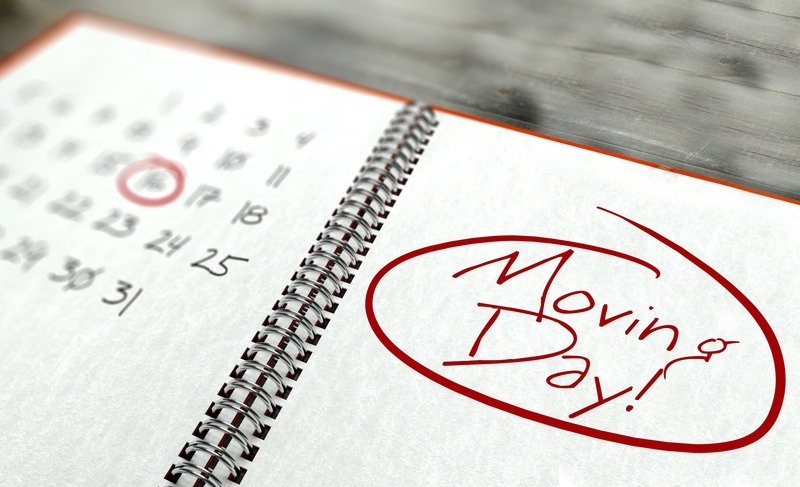Packing for a Move: What to Do First and What to Leave for Last
Packing for a move can feel like an overwhelming and daunting task, whether you're relocating across town or moving to a different state. Knowing what to pack first and what to leave for last is pivotal in ensuring a smoother and more efficient moving experience. This comprehensive guide offers actionable tips, detailed checklists, and smart strategies to streamline your packing process from start to finish. If you want to know how to make packing for a move less stressful, read on!
Why Planning Matters: The Key to Easy Packing
When you are packing for a move, good planning is everything. Without a clear plan, it's easy to get lost in a sea of boxes and clutter. Here's why taking the time to map out your move saves both your time and sanity:
- Reduces last-minute stress.
- Prevents items from getting lost or damaged.
- Saves you money on moving supplies and transport.
- Makes unpacking in your new home much easier.
Pro tip: A check-list keeps you accountable and helps you track your progress. Start one before you even touch a moving box!

What to Pack First When Moving
One of the crucial decisions when packing for a move is where to begin. Tackling the right items early can free up your time and create space for packing more essential, everyday belongings closer to your move-out date.
1. Start With Non-Essentials
Begin by packing up rooms and items you use least often. This approach reduces disruption to your daily life and helps you get a head start.
Pack these non-essential items first:- Seasonal clothes and shoes: If you're moving in summer, winter coats, boots, and gloves can go first.
- Holiday decorations: Packing up Christmas lights and Halloween decor is a no-brainer if it's out of season.
- Books, CDs, and DVDs: Pack up your collection except for a few favorites.
- Rarely used kitchenware: Think turkey roasters, specialty pans, and that fondue set you haven't touched in years.
- Collectibles and decor: Vases, picture frames, artwork, and decorative items can be boxed up early.
- Garage and attic items: Tools, camping gear, and seldom-used storage can be packed ahead of time.
By prioritizing these less essential items, you minimize disruption and build early momentum in your move.
2. Pack Storage Spaces Next
- Attics, basements, sheds, and garages are often filled with things you won't need in the weeks before your move. These spaces can become temporary holding zones for packed boxes destined for the moving truck.
- Declutter as you go: Sort, donate, recycle, or discard anything you don't want to move. Start three to four weeks before your move date for best results.
3. Tackle Spare Rooms and Guest Spaces
Guest rooms, home offices, and other low-use spaces should come next. These rooms
usually hold things you can do without for a few weeks.
- Pack up: Extra bedding, guest towels, bookshelves, and office decor
- Leave out: Anything you actively use, such as important paperwork, current work files, and furniture needed until moving day
Packing for a Move: Sorting, Decluttering, and Organizing
Moving is the perfect opportunity to declutter your life. Sort through your belongings before packing them, which saves time and space (and reduces moving costs!). Here's how to get started:
- Set aside boxes for donations, recycling, and trash as you pack.
- Ask yourself if you've used the item in the last 12 months.
- If you haven't, consider letting it go.
- Label donation and discard boxes clearly to avoid confusion.
- Arrange for donation pickups or visits to charity drop-off sites before moving day.
Pro tip: Many moving companies base their fees on the weight of your goods, so the less you move, the more you save!
What to Leave for Last When Packing
Knowing what to pack last when moving is just as important as knowing what to pack first. Your daily essentials and frequently used items should remain accessible until just before you leave.
1. Daily Necessities
- Toothbrushes and toiletries: Personal hygiene comes first right up until moving day.
- Prescription medications: Keep these out until the last minute and transport them yourself.
- Basic clothing and shoes: Plan a moving-week wardrobe, including sleepwear and a few changes of clothes.
- Essential kitchenware: Coffee maker, a few plates, glasses, utensils, and the frying pan you use daily.
- Essential electronics: Phone chargers, laptops, and tablets for work and communication.
- Important documents: Passport, ID, insurance papers, lease or mortgage paperwork--keep these in a special travel folder or box.
2. Kids' and Pets' Essentials
- Children's favorite toys and comfort items: These can help ease stress during the move.
- Pet food, bowls, leashes, and carriers: Keep pet necessities handy until the very end.
3. Cleaning Supplies and Tools
- Leave out enough cleaning products to give your old home a final sweep after the moving truck leaves.
- Paper towels, all-purpose cleaner, broom, and vacuum should stay accessible until moving day is over.
4. Final-Day 'Open First' Box
Prepare a clearly labeled "Essentials Box" or "First Night Kit" with must-have items for your first day and night in your new place, such as:
- Bedding and pillows
- Toiletries and toilet paper
- Snacks and bottled water
- Basic cookware and utensils
- Medications and first aid kit
- Chargers and extension cords
- A change of clothes
This box should be loaded last so it's the first thing you unpack!
Room-by-Room Packing Strategy
Efficient moving packing requires a room-by-room approach. Here's a breakdown of how to pack smartly and what to prioritize in each area.
Bedroom
- Pack off-season clothes, shoes, and unused linens first.
- Leave out enough clothes for the move and first week at your new home.
- Disassemble bed frames and large furniture last to ensure you have a comfortable place to rest.
Kitchen
- Purge the pantry: Toss expired goods and pack infrequently used items early.
- Set aside a few plates, cups, and utensils for last-minute use.
- Pack small appliances (blender, waffle maker) that you don't use daily.
- Defrost and clean the refrigerator 24 hours before moving (plan easy freezer meals the week before).
Living Room
- Pack books, DVDs, decorative items, and electronics you don't use often.
- Wrap fragile decor securely with bubble wrap or soft textiles.
- Take down wall art and curtains a few days before moving.
- Disassemble large furniture last; protect it with moving blankets as you go.
Bathroom
- Keep out only essential toiletries and medications.
- Pack up extra towels, bath mats, and first aid supplies early.
- Use up open products (shampoos, soaps) to minimize what you move.
Smart Tips for Stress-Free Packing
Take the stress out of moving and packing by using these expert tips and tricks:
Label Everything Clearly
- Label boxes with the destination room and a summary of contents.
- Use colored tape or stickers to make box sorting even easier.
- Mark fragile boxes boldly so movers handle them with care.
Pack by Weight and Need
- Heavy items in small boxes; lighter items in larger ones.
- Keep essential boxes accessible at all times.
- Remember--the first boxes you pack should not be the first you unpack!
Take Photos of Electronics
Snap a quick pic of how your TV, computer, and stereo wires are set up. This will make re-assembly in your new home a breeze!
Common Packing Mistakes to Avoid
Even seasoned movers make mistakes. Avoid these pitfalls to ensure your packing process stays on track:
- Leaving packing until the last minute: Start at least four to six weeks before your move.
- Overfilling boxes: Heavier boxes are harder to move and more prone to damage.
- Forgetting to back up digital files: Back up important documents and photos before you unplug your computer.
- Ignoring insurance needs: Consider moving insurance for valuable or irreplaceable items.
- Not taking time to sort and declutter: Moving is harder when you hold on to things you no longer want or need.

Frequently Asked Questions about Packing for a Move
What should I pack first for moving?
Always start by packing non-essential items like holiday decorations, books, and out-of-season clothing. This creates momentum and space for sorting through the rest of your things.
How early should I start packing for a move?
Begin packing at least 4-6 weeks before your move date. Starting early allows you to sort, declutter, and avoid last-minute chaos.
How do I decide what to leave for last?
Leave daily essentials--clothes, toiletries, documents, electronics, and kitchen basics--until the end. They'll be among the first things you'll need at your new home.
How can I stay organized during a move?
Use checklists, color-coded labels, and apps to track boxes and tasks. This organization keeps your move stress-free!
Conclusion: Smooth and Smart Moving Starts With Good Packing
Packing for a move doesn't have to be overwhelming. By following a smart packing order--starting with non-essentials and ending with daily use items--your move will be streamlined, efficient, and less stressful. Remember to declutter as you go, label boxes clearly, and plan for those last-day necessities. Good luck with your upcoming move, and may it be your easiest one yet!
Want more moving tips? Subscribe to our newsletter for the latest expert advice on packing and moving!